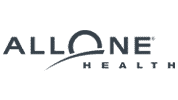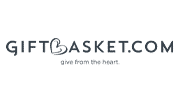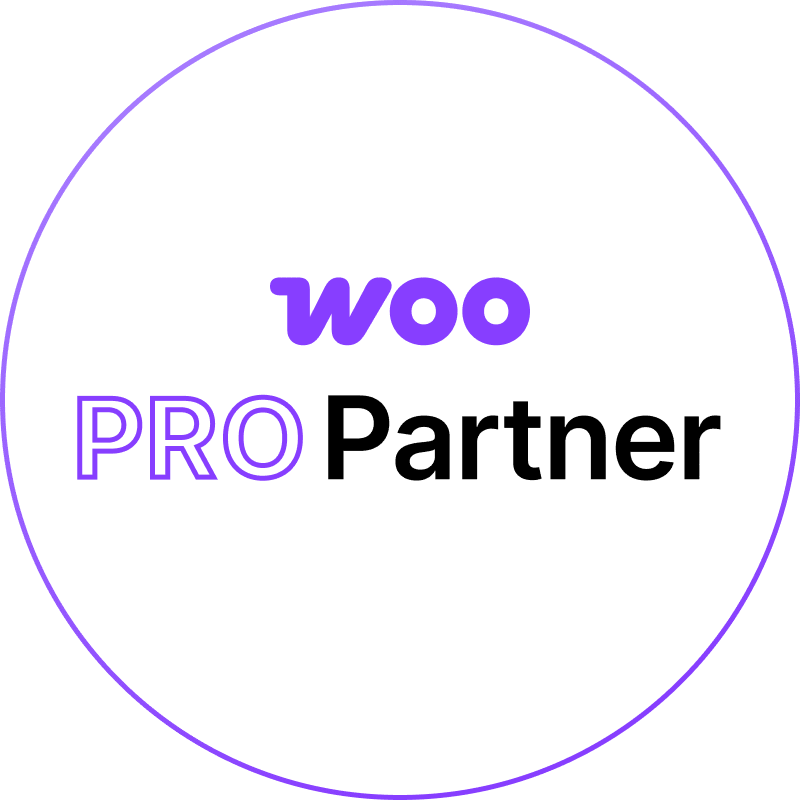How to Use Data-Driven SEO to Stay Ahead of Competitors
In the ever-changing world of search engine optimization (SEO), relying on guesswork or outdated strategies is no longer an option. Data-driven SEO has emerged as the most effective way for businesses to outperform competitors and secure top rankings on search engines. By leveraging data insights, businesses can identify opportunities, refine strategies, and make informed decisions that drive results.
Data-driven SEO is not just about monitoring website traffic or keyword rankings—it’s about understanding user behavior, market trends, and competitor performance. These insights allow businesses to anticipate changes in search engine algorithms, identify gaps in their strategies, and create content that resonates with their target audience.
For an ecommerce SEO agency, data-driven strategies are particularly important. With the highly competitive nature of online retail, businesses must use data to uncover unique opportunities, optimize product pages, and attract qualified traffic. Embracing this approach ensures that your SEO efforts are not only efficient but also impactful, helping you stay ahead in an increasingly crowded digital landscape.
Setting Clear SEO Goals and KPIs
Before diving into data analysis, it’s essential to set clear goals and define key performance indicators (KPIs) that align with your business objectives. These benchmarks provide a roadmap for measuring the success of your SEO efforts and help you focus on the metrics that matter most.
Start by identifying what you want to achieve with your SEO strategy. Are you looking to increase organic traffic, improve keyword rankings, or boost conversions? For example, an ecommerce store may prioritize driving traffic to product pages and increasing sales, while a service-based business might focus on generating leads.
Once your goals are clear, choose KPIs that correspond to these objectives. Common KPIs include organic search traffic, conversion rates, bounce rates, and domain authority. For instance, if your goal is to improve the visibility of a specific product, tracking its search ranking and click-through rate (CTR) can provide valuable insights into your progress.
Regularly monitoring these KPIs allows you to measure the effectiveness of your strategies and make adjustments as needed. For example, if traffic to your blog is increasing but conversions remain low, you might need to optimize your call-to-action (CTA) or refine your landing page design. By focusing on measurable outcomes, businesses can ensure their SEO efforts are aligned with their overarching goals.
Competitor Analysis: Benchmarking Your Performance
Competitor analysis is a cornerstone of data-driven SEO. Understanding what your competitors are doing—and where they’re succeeding—provides valuable insights that can inform your own strategy. By identifying their strengths, weaknesses, and gaps, you can craft a plan that not only matches their performance but surpasses it.
Start by identifying your key competitors. These may include businesses targeting the same keywords, serving the same audience, or dominating the search engine results pages (SERPs) for your industry. Tools like SEMrush, Ahrefs, and Moz can help you gather data on competitors’ keyword rankings, backlinks, and top-performing pages.
One of the most valuable aspects of competitor analysis is keyword research. Look at the keywords your competitors are ranking for and assess their relevance to your business. Are there high-value keywords they’re targeting that you’ve overlooked? Conversely, are there gaps in their strategy—keywords they’re not ranking for—that you can capitalize on? For example, an ecommerce store might find that a competitor ranks well for general product terms but hasn’t optimized for long-tail keywords like “affordable organic skincare for sensitive skin.”
Backlink analysis is another critical component. By examining your competitors’ backlink profiles, you can identify high-quality sites linking to their content and pursue similar opportunities. For instance, if a competitor has earned backlinks from popular industry blogs, you can create equally valuable content and reach out to those same sites for collaboration.
Competitor analysis not only helps you benchmark your performance but also uncovers actionable opportunities to refine your strategy. By consistently monitoring your competitors, you can stay one step ahead and position your business as a leader in your industry.
Keyword Research: Finding Opportunities and Gaps
Effective keyword research is the foundation of any data-driven SEO strategy. By identifying high-value keywords and uncovering gaps in competitors’ strategies, businesses can target search terms that drive qualified traffic and improve rankings. Data-driven tools like Google Keyword Planner, SEMrush, and Ahrefs make this process easier by providing insights into search volume, competition, and user intent.
The key to successful keyword research is focusing on both high-traffic and long-tail keywords. High-traffic keywords can boost visibility, while long-tail keywords—phrases with three or more words—are more specific and often attract users closer to making a purchase. For example, instead of solely targeting “laptops,” an electronics retailer might target long-tail keywords like “best budget laptops for students” to capture a niche audience with clear intent.
Another important aspect is identifying keywords your competitors rank for but you don’t. These gaps represent opportunities to create targeted content that meets user demand. For instance, if a competitor ranks for “sustainable packaging solutions” but hasn’t addressed “cost-effective sustainable packaging,” your business can fill that void by creating comprehensive guides or case studies around the topic.
Regularly revisiting your keyword strategy ensures it evolves alongside market trends and user behavior. This iterative approach keeps your content relevant and competitive, allowing you to capture new opportunities as they arise.
Content Performance Analysis
Analyzing the performance of your content is essential for refining your SEO strategy and ensuring your efforts are aligned with user needs. By assessing which pages drive traffic, engage users, and convert visitors, you can focus on optimizing high-performing content and improving underperforming pages.
Start by using tools like Google Analytics or SEMrush to identify your top-performing content. Look for patterns in topics, formats, or keywords that resonate with your audience. For example, if blog posts with actionable tips perform better than general industry news, you can prioritize creating similar content to replicate that success.
For underperforming content, conduct a detailed review to identify areas for improvement. Is the content outdated or lacking in-depth information? Are the meta titles and descriptions optimized for target keywords? Enhancing these elements can significantly boost visibility and engagement. For instance, an outdated blog post about “2020 social media trends” can be updated with current trends and retargeted keywords to remain relevant.
Content repurposing is another effective strategy. High-performing blog posts can be transformed into infographics, videos, or social media snippets to reach a wider audience. Similarly, consolidating multiple low-performing pages into a comprehensive guide can improve rankings and user experience.
By consistently analyzing content performance and making data-driven improvements, businesses can maximize the ROI of their SEO efforts and ensure their content remains competitive.
Backlink Analysis and Link-Building Strategies
Backlinks remain one of the most critical ranking factors in SEO, as they signal authority and trust to search engines. Conducting a thorough backlink analysis can reveal opportunities to strengthen your link profile and gain an edge over competitors.
Start by using tools like Ahrefs or Majestic to assess your current backlinks. Identify high-quality links from reputable sources as well as any low-quality links that may harm your rankings. Tools can also reveal where competitors are earning their backlinks, providing insight into strategies you can replicate or improve upon.
For example, if a competitor has secured backlinks from popular industry blogs or local news outlets, you can develop content that appeals to these same sources. This might include guest posts, expert insights, or unique case studies that showcase your expertise. A fashion brand, for instance, could create a guide on “Sustainable Fashion Trends” and pitch it to sustainability-focused websites for backlinks.
Broken link-building is another effective tactic. By identifying broken links on reputable sites and offering your content as a replacement, you can gain valuable backlinks while helping site owners maintain quality content.
Creating shareable, high-value content is also key to earning backlinks naturally. Infographics, whitepapers, and in-depth guides are highly linkable assets that attract attention from other websites. Pairing this strategy with targeted outreach ensures your content reaches the right audiences and earns authoritative links.
By leveraging data-driven insights to build and refine your backlink strategy, businesses can improve their domain authority, increase rankings, and drive more organic traffic.
Leveraging Analytics for On-Page Optimization
On-page optimization is a cornerstone of any successful SEO strategy, and data-driven insights can make this process significantly more effective. By analyzing user behavior, engagement metrics, and site performance, businesses can refine their on-page elements to improve rankings and enhance user experience.
Start with tools like Google Analytics, Hotjar, or Crazy Egg to gather data on how users interact with your site. Heatmaps, for example, can show where users click most frequently, helping you identify important elements that need to be more prominent. If users consistently click on secondary navigation links rather than the main menu, it might indicate a need to redesign your site’s layout to make navigation more intuitive.
Engagement metrics like bounce rates and session durations also provide valuable insights. High bounce rates on specific pages could signal issues such as slow loading times, irrelevant content, or poor design. For example, if users frequently leave a landing page for “Affordable SEO Tools” after a few seconds, optimizing the meta description, improving readability, or adding a clear call-to-action (CTA) can help retain visitors.
Additionally, data-driven on-page optimization should focus on refining meta titles, descriptions, and headers to align with user intent and target keywords. For example, a page targeting “beginner photography tips” should have a title like “Essential Beginner Photography Tips: Master Your Camera in Minutes.” This approach not only improves rankings but also boosts click-through rates by clearly conveying the page’s value to users.
Using data to guide on-page optimization ensures your website is both user-friendly and search engine-friendly, creating a solid foundation for SEO success.
Predictive Analytics for SEO Trends
Predictive analytics is revolutionizing SEO by enabling businesses to anticipate trends and adapt their strategies proactively. This forward-looking approach leverages AI and machine learning to analyze historical data and identify patterns that signal future behavior. For businesses, this means staying ahead of competitors by targeting emerging keywords and creating content that meets upcoming demand.
For example, an ecommerce site selling eco-friendly products might notice a steady increase in searches for “sustainable packaging solutions” based on predictive data. By creating content or product pages optimized for this trend, the business can secure rankings before the market becomes saturated.
Predictive analytics tools, such as SEMrush’s keyword trend reports or Google Trends, can help identify these opportunities. They can also reveal seasonal fluctuations in search behavior, allowing businesses to plan content calendars and campaigns accordingly. A travel company, for instance, might use predictive insights to prepare content about summer vacation destinations months in advance, ensuring it ranks when demand peaks.
This approach also extends to anticipating algorithm changes. By analyzing updates to Google’s ranking factors, businesses can adapt their strategies before competitors. For example, if predictive analysis suggests a greater emphasis on Core Web Vitals, businesses can invest in performance optimization ahead of time.
By embracing predictive analytics, businesses can stay one step ahead, capturing traffic and engagement that competitors may miss.
Monitoring and Adjusting Your Strategy
SEO is not a one-time effort—it’s an ongoing process that requires regular monitoring and adjustments to remain effective. By analyzing performance data, businesses can identify what’s working, what’s not, and where to make improvements to stay competitive.
Start by tracking key metrics like organic traffic, keyword rankings, and conversion rates. Tools like Google Search Console provide a wealth of data on search performance, including which queries drive the most clicks and impressions. If a particular keyword is performing well but its CTR is low, revising the meta title and description to be more compelling can boost click-through rates.
Regular audits are essential for identifying technical issues that could impact performance. Broken links, slow-loading pages, or outdated content can all harm rankings. Tools like Screaming Frog or Ahrefs can help uncover these issues and provide actionable recommendations for fixes.
Competitor tracking is also critical. By monitoring competitors’ rankings, content updates, and backlink profiles, you can adjust your strategy to stay ahead. For instance, if a competitor launches a new blog post targeting a shared keyword, updating your own content to be more comprehensive can help maintain your position in search results.
Flexibility is key when adjusting your SEO strategy. Search trends, user behavior, and algorithm updates can all shift rapidly, so staying agile ensures your efforts remain aligned with current opportunities.
Building a Data-Driven SEO Workflow
To fully leverage the power of data in your SEO efforts, it’s essential to establish a workflow that integrates analysis and action seamlessly. A data-driven SEO workflow ensures that insights are consistently used to inform decisions, prioritize tasks, and achieve measurable results.
Begin by setting up a central dashboard where all key metrics are tracked in real time. Tools like Google Data Studio or SEMrush can consolidate data from various sources, making it easier to identify trends and opportunities at a glance. For instance, a sudden spike in impressions for a specific keyword might indicate an emerging trend worth capitalizing on.
Next, create a structured process for analyzing data and implementing changes. Assign team members or departments specific responsibilities, such as content updates, technical fixes, or outreach campaigns. For example, the content team might focus on optimizing underperforming blog posts, while the technical team addresses site speed issues highlighted in Core Web Vitals reports.
Regularly review and refine your workflow to ensure it remains effective. Conduct monthly or quarterly strategy meetings to discuss performance, set new goals, and evaluate the impact of past efforts.
By building a data-driven SEO workflow, businesses can streamline their efforts, maximize ROI, and maintain a competitive edge in an ever-changing digital landscape.

















